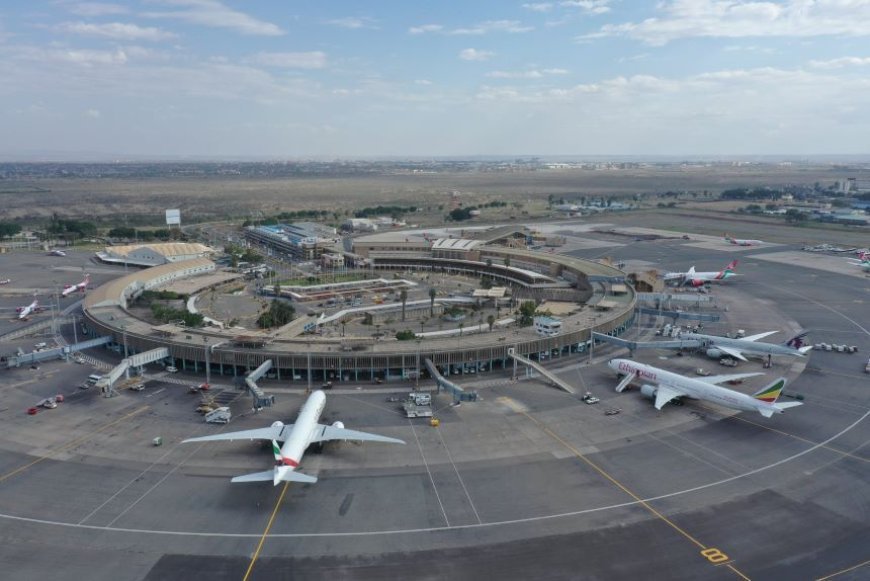Kenya Takes Lead in Africa’s Green Aviation Race: What It Means For You
Dubbed the Nairobi SAF Policy Roadmap, the plan outlines how Africa can seize its renewable energy and biomass potential to lead the global shift toward carbon-neutral flying.

Kenya is positioning itself at the heart of Africa’s aviation revolution after Kenya Airways (KQ) and KLM Royal Dutch Airlines brought together top global and regional aviation leaders in Nairobi to hammer out a historic deal on Sustainable Aviation Fuel (SAF) — the cleaner, greener future of flying.
For the first time, Africa’s biggest aviation stakeholders — including the International Civil Aviation Organization (ICAO), Kenya Civil Aviation Authority (KCAA), Kenya Airports Authority (KAA), African Airlines Association (AFRAA), and the International Air Transport Association (IATA) — agreed to a shared policy and investment roadmap that will accelerate the production and use of SAF across the continent.
Dubbed the Nairobi SAF Policy Roadmap, the plan outlines how Africa can seize its renewable energy and biomass potential to lead the global shift toward carbon-neutral flying.
It proposes tax breaks and subsidies to boost local production, national blending mandates to stimulate airline demand, and faster certification processes to attract new innovators and investors.

Kenya Airways CEO Allan Kilavuka (left) at a high-level executive roundtable in Nairobi held on October 6, 2025. /KENYA AIRWAYS
The roadmap also calls for deeper cross-border collaboration among governments, regulators, and the private sector to harmonize standards and strengthen the continent’s SAF supply chain.
This milestone meeting comes at a defining moment for global aviation, a sector responsible for up to three percent of the world’s carbon dioxide emissions.
With Africa’s passenger traffic projected to double by 2035, the continent faces a critical opportunity to shape a more sustainable aviation future before the next growth wave takes off.
Zita Schellekens, Senior Vice President for Group Sustainability at Air France–KLM, underscored the urgency of coordination, saying Africa already has the tools to lead.
“What’s needed now is alignment — bringing together policy, infrastructure, and innovation to unlock scalable SAF solutions across the continent,” she said. “Africa has both the natural resources and human capacity to take the lead in sustainable aviation.”
Kenya Airways Group Managing Director and Chief Executive Officer Allan Kilavuka reaffirmed the airline’s commitment to regional sustainability, saying, “Africa’s aviation growth must go hand in hand with sustainability. Kenya Airways is committed to partnerships that build the foundations of a viable SAF ecosystem — one that benefits our industry, our environment, and our communities.”
The Nairobi roundtable forms part of SkyTeam’s global Aviation Challenge, a joint effort among member airlines to accelerate climate action.
Alongside the talks, Kenya Airways and KLM unveiled a joint sustainability roadmap outlining clear targets for SAF adoption, pilot projects in Kenya and the Netherlands, as well as new collaborations with universities to train engineers and researchers for Africa’s green aviation transition.
What It Means
For Kenyans, this isn’t just another corporate announcement — it’s a signal of economic opportunity and environmental leadership.
SAF production could create thousands of jobs in agriculture, biofuel manufacturing, and renewable energy while cutting reliance on imported jet fuel. By tapping into local feedstocks such as sugarcane, agricultural waste, and algae, Kenya can position itself as a major producer and exporter of green fuel.
The Nairobi SAF Policy Roadmap also boosts Kenya’s standing as a hub for sustainable innovation and climate investment. Cleaner aviation aligns with the country’s long-term climate goals and strengthens its reputation as a responsible tourism and trade destination.
By combining global expertise with African innovation, the Nairobi SAF Roadmap marks a defining step toward a cleaner aviation future.
This places Kenya firmly in the cockpit of Africa’s sustainability journey — steering the continent toward greener skies, stronger economies, and a more climate-resilient future.







